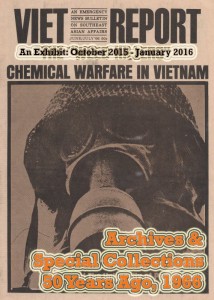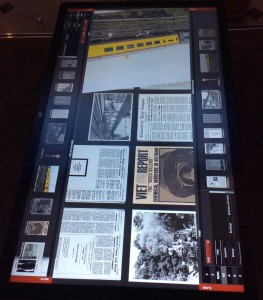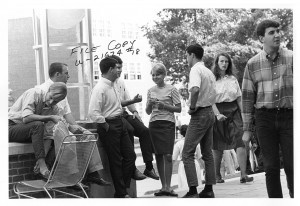[slideshow_deploy id=’8382′]
After World War II the United States faced a widespread fear of the rise of Communism referred to as the Red Scare, which generally lasted between the late 1940s to the mid-1950s. Led by Senator Joseph McCarthy of Wisconsin, this fear revolved around the apprehension that Communists would infiltrate and subvert society, academia, the workplace and the federal government. Accusations of subversion and treason were made to thousands of citizens and many lost their jobs or were put on trial for perceived sympathy with Communists or for membership in the Communist Party. Many were prosecuted for violating the Smith Act, whereby penalties were imposed for those who advocated for the overthrow of the government.
Archives & Special Collections has many resources that illustrate the fear and paranoia of this period in history. They include:
- Records of the University of Connecticut’s “Committee of Five.” In March 1953 a standing committee of the University Senate was appointed to investigate charges that four members of the faculty were Communists. The collection consists of transcripts of interviews with the faculty members, correspondence and meeting minutes of the determinations of the committee. The finding aid to this small but powerful collection can be found in our digital repository at https://archivessearch.lib.uconn.edu/repositories/2/resources/315
- The papers of UConn President Albert Jorgensen also include a small amount of information about the accusations of UConn faculty in the 1950s.
- Jack Goldring of Trumbull, Connecticut, served in the National Guard and as a serviceman in the Air Force during World War II but was a longtime member and official with the Connecticut Communist Party. In May 1954 he was arrested by the F.B.I. and charged under the Smith Act for pursuing subversive activities. His papers, consisting of court documents, newsletters of Communist groups and other publications, and writings, tell the story of his trial and his beliefs and activities as a member of the Communist Party. The finding aid to his collection is available at https://archivessearch.lib.uconn.edu/repositories/2/resources/403. Available in our digital repository are transcripts of interviews conducted by UConn’s Center for Oral History of Goldring (http://hdl.handle.net/11134/20002:860320454) and his wife Harriet (http://hdl.handle.net/11134/20002:860320141)
- The Sargent Company of New Haven was a manufacturer of locks and hardware. In the late 1940s the management of the company actively tried to prevent the workers’ union from infiltration by Communists. They collected and studied publications of the Communist Party of America and monitored workers protests around the city. The files they compiled are included in the Sargent Company Records; the finding aid to the collection can be found here: https://archivessearch.lib.uconn.edu/repositories/2/resources/638
- The Labor History Archives has information about Communism scattered across many collections, and the Alternative Press Collection can also provide resources. Please ask at the reference desk for more information.
The collections also include many contemporary published sources, mostly pamphlets and flyers, from the Alternative Press Collection, about the Red Scare. They include the pamphlet “Why Negroes are Joining the Communist Party,” from 1946.
We invite you to view these collections in the reading room in Archives & Special Collections if you need resources about the Red Scare, McCarthyism, the Smith Act, or the general climate of the United States in the late 1940s or early 1950s. Our staff is happy to assist you in accessing these and other collections in the archives.



